It’s been widely known that avocados can grow in London for decades, I’ve seen the trees around the city since I moved here in 1999, including two small trees a few minutes from our flat in Clapham. Earlier this week however, tropical plant enthusiast, Joe McCullough shared an amazing video on his Tropicals YouTube channel showing a huge avocado laden tree in South London. When Issy Hardman recognised the street a short tube ride from me in Clapham, well, I had to go and see for myself (I won’t share location here as it’s in a residential lane). Off I trotted.

Sure enough, there were two humongous avocado trees growing next to one another, I’d estimate between 8 – 10m tall. I’m not sure what species or cultivar this is, so if you recognise it, please let me know. The fruit look too large to be the most hardy types to me, which I spoke to Craig Hepworth about in this column.
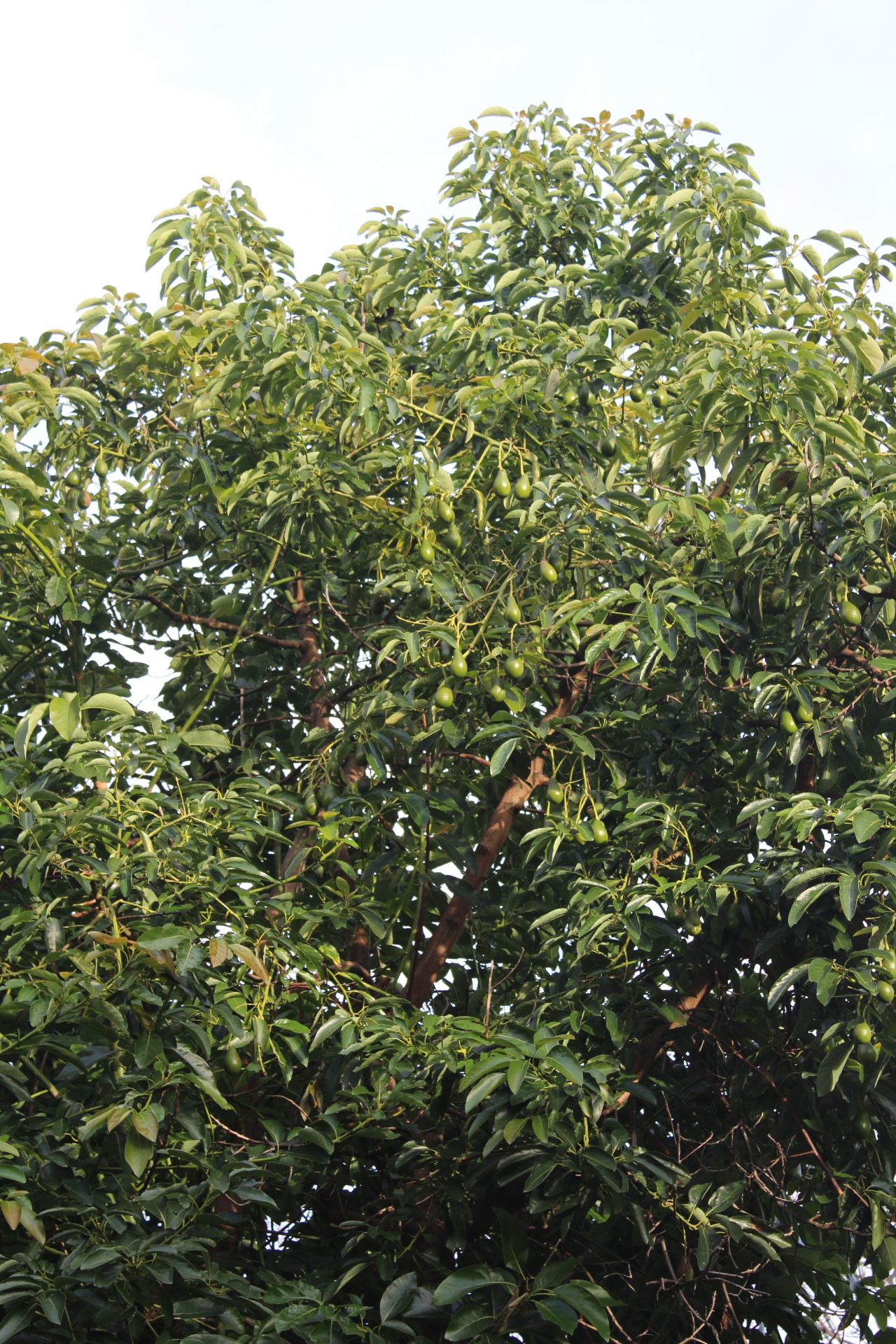
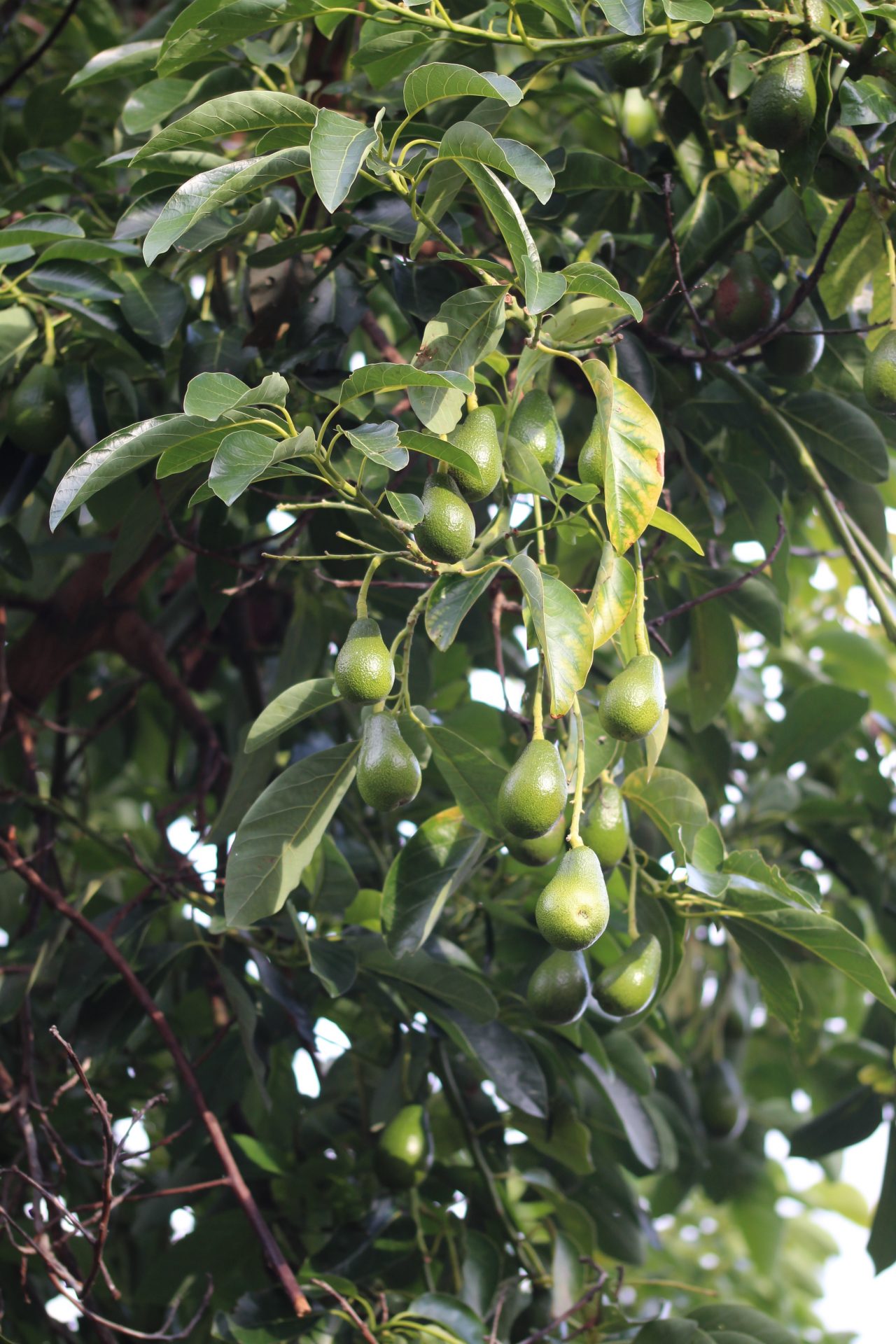
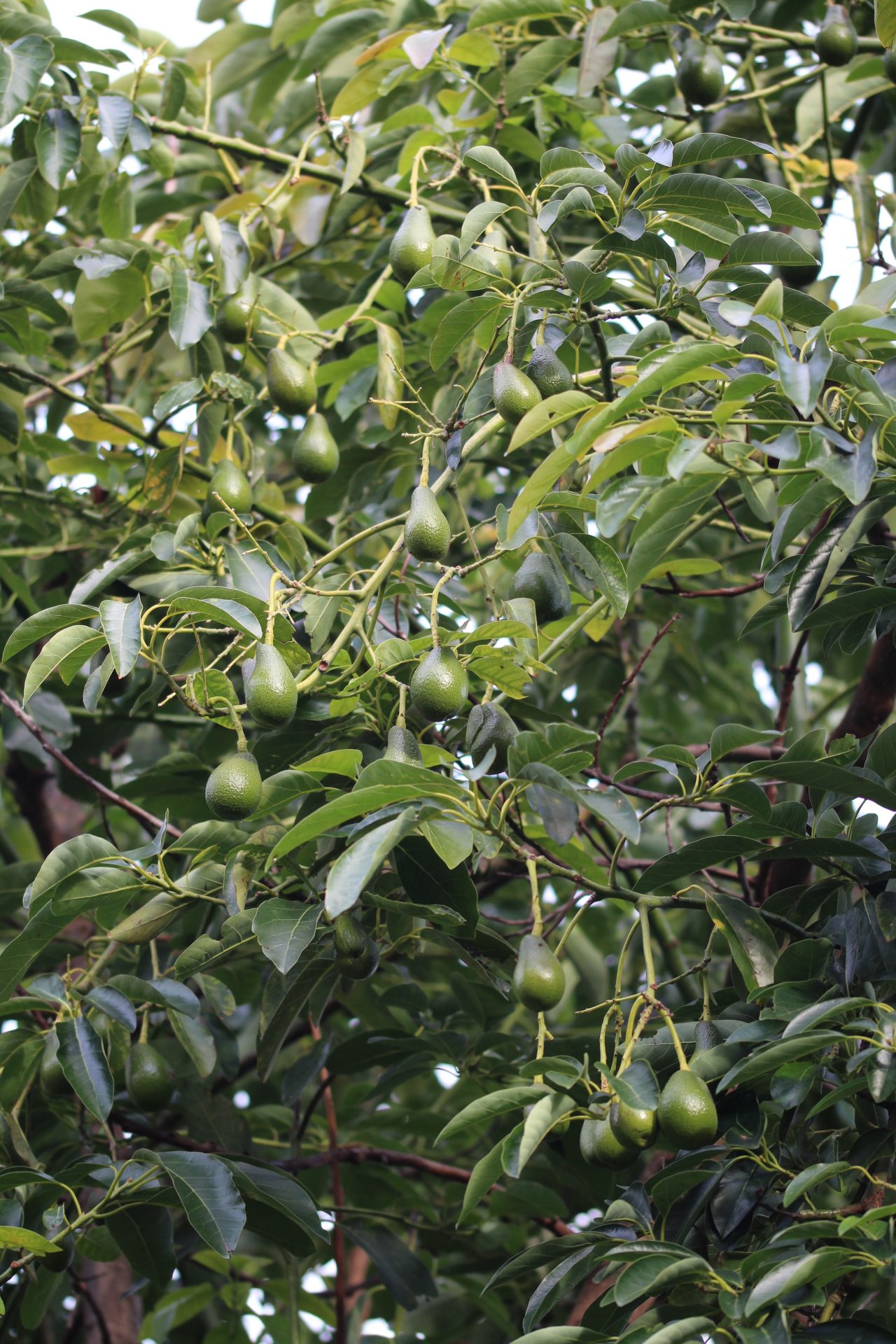
With so much evidence that avocados can be grown in this country for so long – given the right conditions, plus long hot summers and mild winters to ripen – it’s a wonder the hardy types aren’t widely grown down south. Ben Probert tells me some are being trialled in Devon and Cornwall, which is good, and I know of many other experienced tropical gardeners trying a number of hardy and non-hardy cultivars in sheltered locations around the country. The trouble being they only crop when fairly mature after 10 – 15 years. Worth the effort though, that crop is a goldmine down Waitrose!
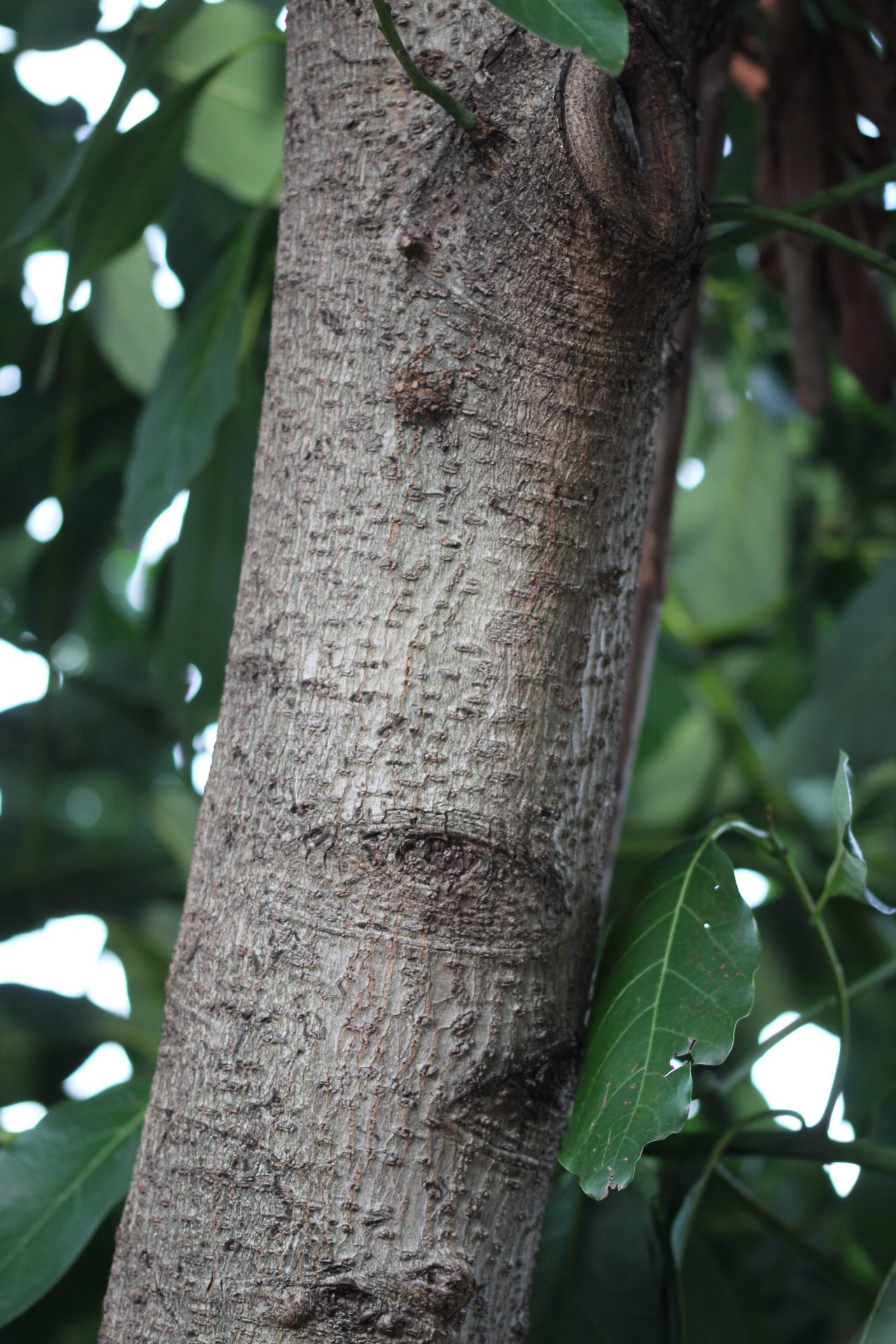
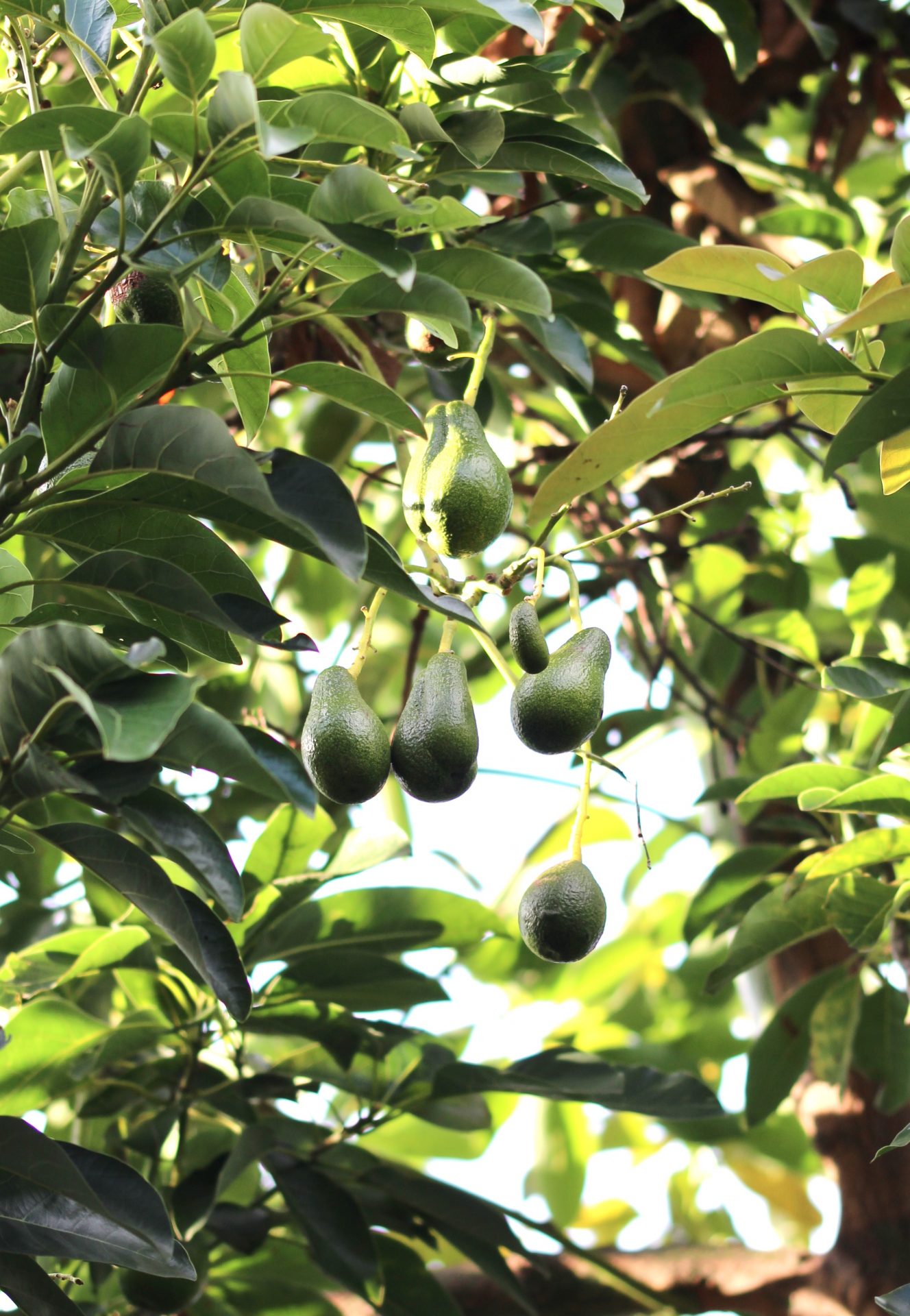

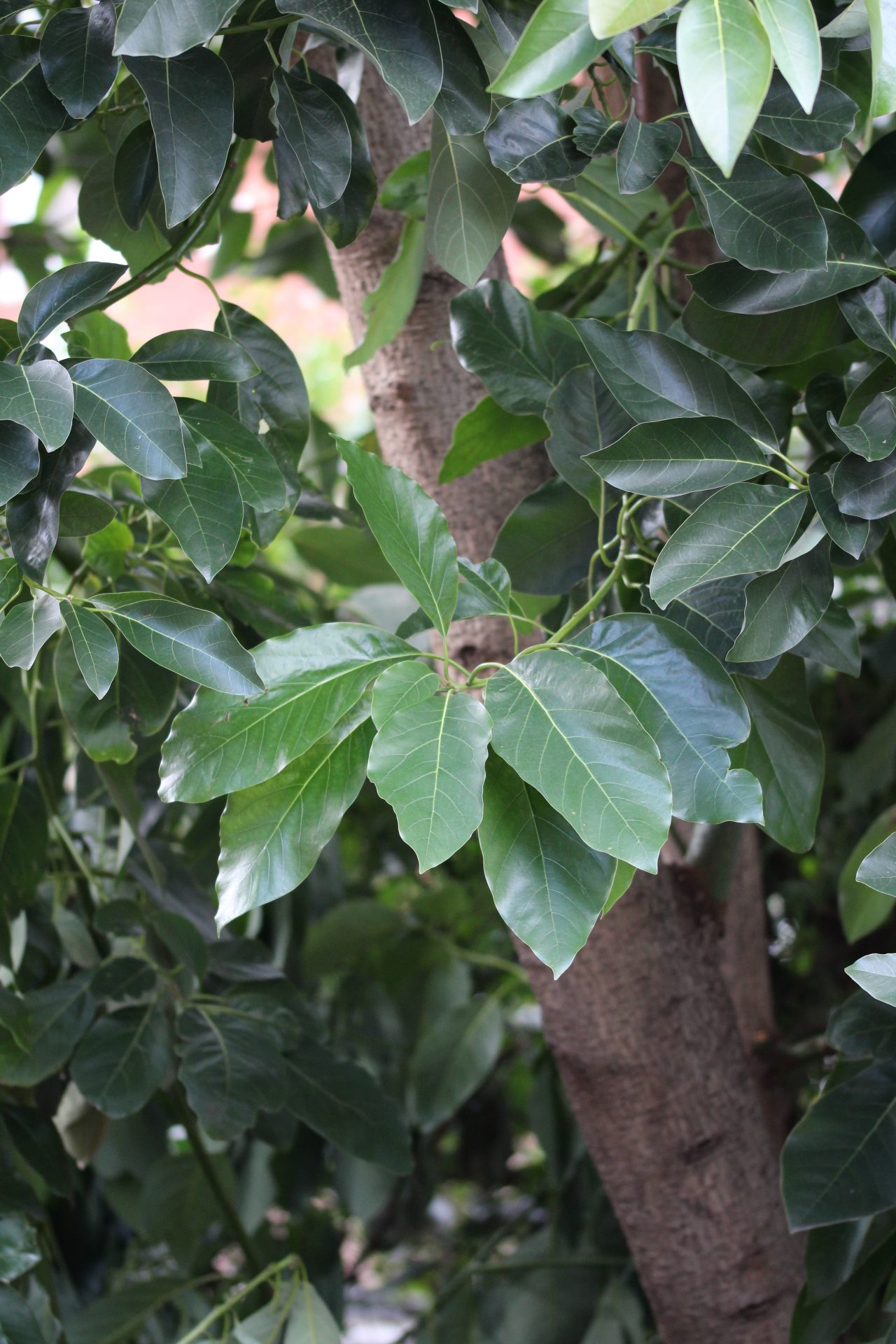
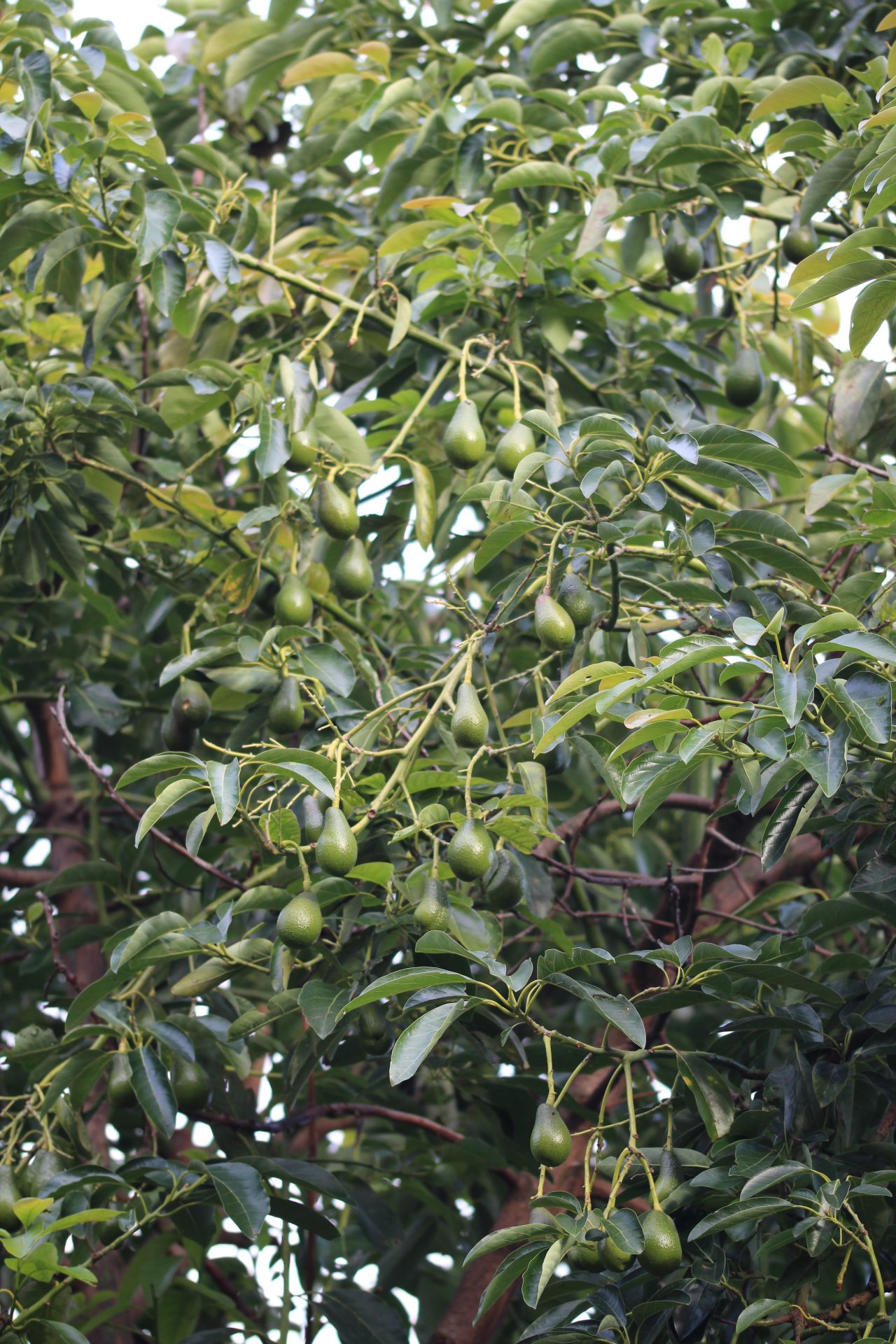
Sadly, the avocados were all well out of reach so I could give one a squeeze to check ripeness. I can’t wait to one day taste one of these London grown avocados!
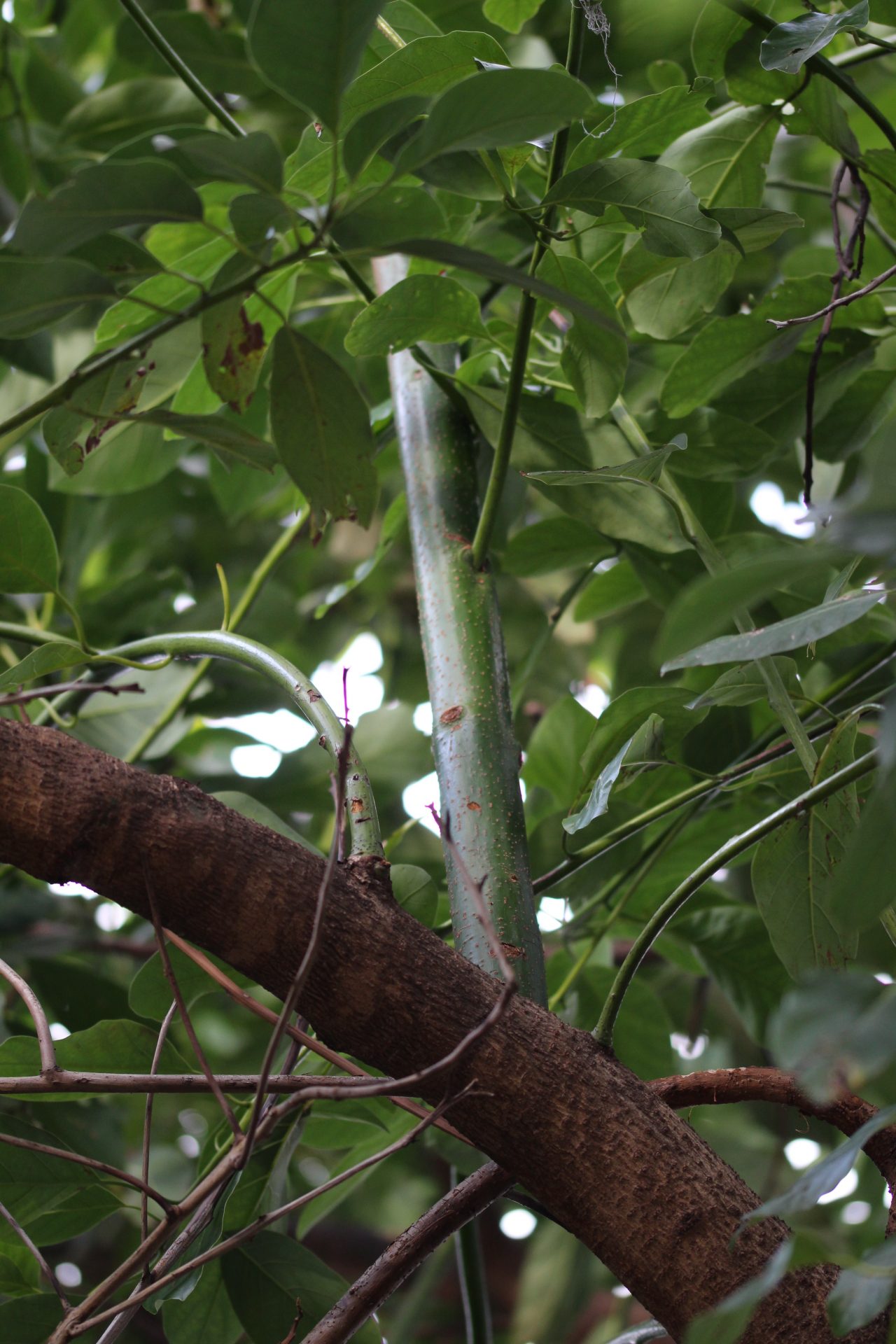

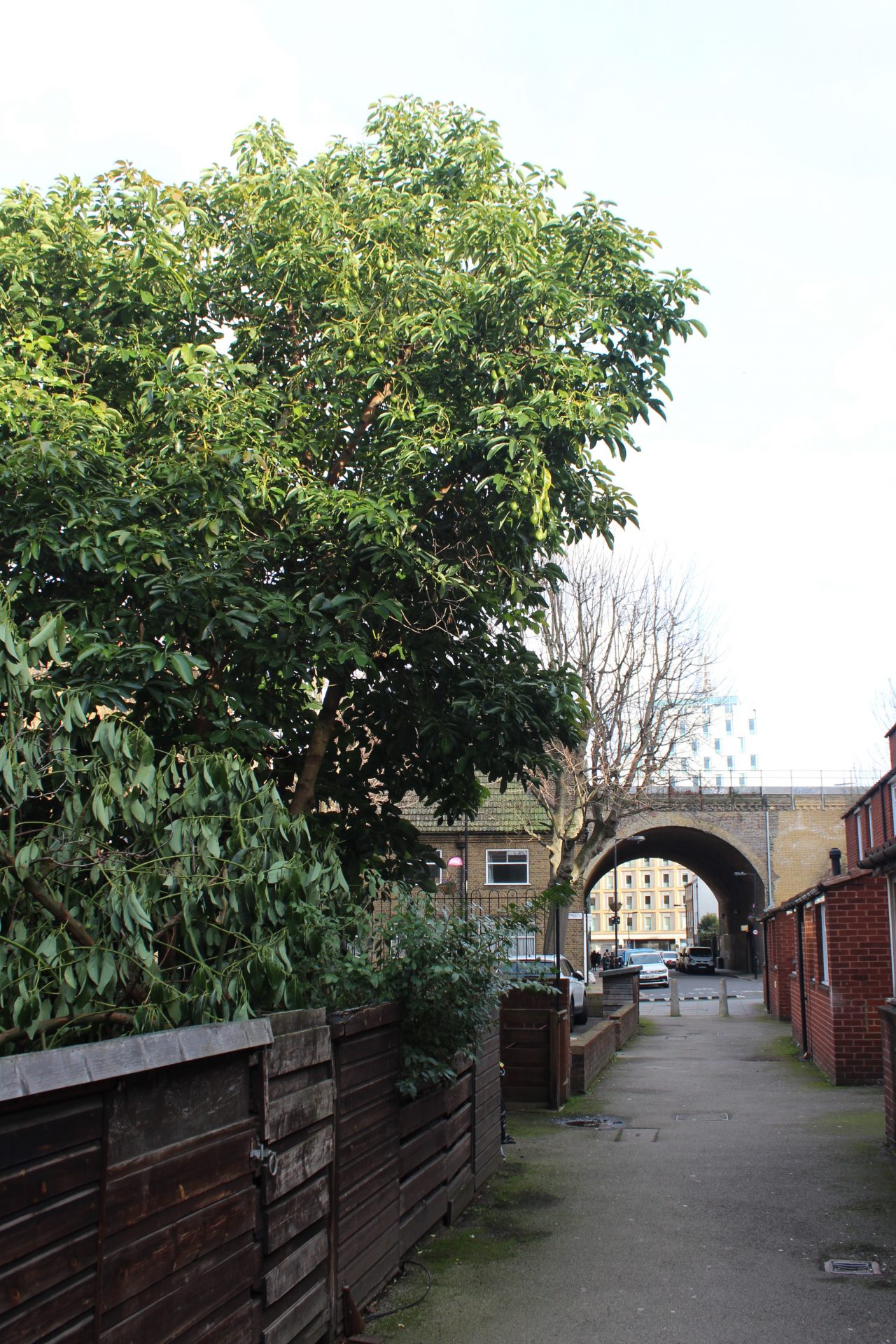
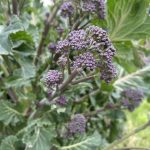

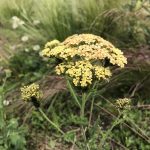
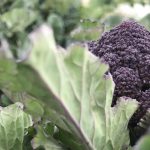
Seen them growing successfully in Menton not sure why bother to grow in London
This would be an ideal candidate for the Chelsea Physic Garden, where the climate is 5°c higher than outside and they already grow a grapefruit and a pomegranate
They actually got in touch with me yesterday to say they are growing one! One of their team planted the seed after eating an avocado years ago. I think more research needs to be done into hardy avocados as some species are even hardier than the types we normally eat.
Very impressive! The bumpy skin indicates they are partially or entirely of the Guatemalan subspecies of avocado, which reportedly can be cold hardy to about -4 or -5C. Does that area typically stay above that temp? So this is not even one of the super cold hardy Mexican subspecies variety, but seems to be thriving. Have you talked to the owner(s) to see if these trees are able to ripen good quality fruit regularly? Also, were these photos taken recently, as in, over winter? In my area (North Florida), the Mexican avocado trees all finished their crop in October, and they’re currently flowering for the 2020 crop.
Thanks Craig! That’s interesting. It’s unlikely to drop beneath -5C where it is. My own garden is a little more exposed and the coldest that has ever been was -7C for twelve hours. Usually it sits at -1C at the coldest. The photos were taken yesterday (29th December) though the video mentioned shows them looking at the same size over a month ago, so perhaps they’re just being refrigerated on the tree at the moment 😄 I haven’t spoken to the owner but may drop them a note to find out more. I know a number of other trees around London fruit too, I’ll try and hunt them down soon if I can to compare.
We have a fruiting avocado in the mini forest behind my flat in Chelsea. Some neighbours want to cut it down and I am desperate to save it and the other trees in the garden.
I think it will need to be pruned and/or propped to keep it out of trouble, and we need some help.
Sincerely,
Philippa Snowdon
I really hope you can save it, but if you can’t, I would love to save it and put in my garden
Thanks, but it is about 40ft high and growing a bit sideways. Apparently the avocados fall and smash to smithereens on the ground. I have not seen that as yet, but hope to see the fruit this year.
Hi, I am a Gardner/permaculture practitioner, would be happy to come & work on the tree if it needs reducing to save it (I’m in S. London). Very fascinated to see a large fruiting avacado in London. Feel free to get in touch..
Thank you and please remind me again after Christmas.
I collected one delicious avocado in September. The ground was covered with them, but birds had got there before me…..
Just found this post, as my Dad’s got one growing in the garden in Clapham too, but it’s only 2-3 years old. Grew it after eating an avocado bought from the market, without potting on anything.
https://imgur.com/qeDJX17
Sorry Richard I only just saw your reply! How fantastic! It will be some years before it crops but if it’s surviving, that’s the first step and it looks very happy.
Interesting. I’d love to get my hands on a Mexican subspecies, apparently the most cold hardy species there is. Does anyone know where to get it or do we have to search for one and grow it from seed? I’d think a cutting is a better propagation method …
I looked into this but it now seems impossible to get the hardy Mexican avocado cultivars in the U.K. Scarletts in Colchester (Essex), used to sell the cultivar ‘Bacon’ (tolerant to -5C), but due to the risk of importation of the bacterial disease Xylella, from mainland Europe, they do not sell it anymore. They used to get their stock from Spain. As far as I know the U.K. remains free of Xylella.
Someone is selling the Mexican seeds on ebay : https://ebay.us/fVpw8K
Don’t buy from this seller (organicbio)!
I contacted organicbio a while ago – his claim that he’s selling cold-hardy Mexican avocados appears fraudulent. First, he had been advertising the cultivar name as “Mexicano Negro” – when I pointed out that this cultivar doesn’t exist he renamed the advert title. Second, when I asked him the source of the seed he said they were supplied by a UK grower who had fruiting cold-hardy Mexican avocado trees here in the UK (unbelievable) – this would be headline news in UK horticulture if it were true). Also look at the two photographs – they depict two very different looking fruit: the first shows smooth black fruit (typical of Mexican cultivars), the second shows bumpy fruit (typical of Guatamalan avocados, not the cold hardy Mexican ones). The first photo is not his – it has been taken from Craig Hepworth’s website https://floridafruitgeek.com/cold-hardy-avocados/
He also stole the photo he is using from someone’s online article about different types of avocado. I notified eBay months ago and they did nothing and he is still using the photo.
Thanks Mike. I did wonder about whether this could be trusted, and especially at the price whether you’d actually get what you were expecting. He’s probably buying Avocados from the supermarket and selling the seeds as Mexican. The buyer would never know unless they’d actually seen a seed from that cultivar.
@Tim. My thoughts entirely. Apparently, if you crush the leaves of the Mexican cultivars, they smell of aniseed, wheres the other avocados don’t – so this could be used as a diagnostic test, but you’d have to germinate the seeds first by which time it might be too late to claim your money back …
Sadly all eBay seeds was fake (no frost résistance) in m’y expérience and some Friends expérience.
Philippa, I’d love to come and take some cuttings and some of the fruit (to grow more from seed)!
Can you climb? The top is miles up. But do come and look at it if you are passing.
Do you know when it should fruit, if it does this year?
I’d have to wait until I have a suitable plant grown from seed to graft a cutting onto. And that is best done in spring for best results. I might be able to try getting a cutting to root directly though.
They should fruit in spring, but in our climate more likely early summer.
I’d love to have a look at it! Where is it exactly?
behind the King’s Road, near the Old Town Hall. PH
We have three avocado trees growing outdoors on an allotment here in St Leonards-on-Sea.
– 2 one-year-old trees, derived from a Fuerte stone, now about 40-50 cm tall
– 1 two-year-old tree, derived from a Hass stone, now about 180 cm tall
Fascinating, thanks Mike! It will be great to know if they fruit eventually 🙂
I think the westerly gales, down here on the coast, will be the biggest challenge this winter. Protecting them while they’re small is no problem, but this is too difficult now with a large 2-year-old tree, though am propagating it (by layering) just in case something happens to the main tree. I’ll leave all three trees unprotected this winter and just see what happens …
I too am trying to grow avocado outside in London. To my mind London’s hardiness zone is about 9b and therefore it’s definitely doable for the hardier Mexican varieties or even the Mexican/Guatemalan hybrids. Alas like others I am finding that sourcing these trees is impossible. It makes no sense that I can easily buy a grafted Haas to grow as a houseplant that will never bear fruit, but I can’t buy a grafted Mexican variety that will grow outside and bear fruit! So I’m doing it myself and will just have to see what survives, what doesn’t and what eventually bears decent enough fruit. I just started with a single Fuerte seedling from a bought avocado fruit which has yet to face its first winter! I desperately scan the supermarkets for anything other than Haas but it’s proving virtually impossible. I may end up trying several Haas in the hope that one of them will have inherited enough cold hardy genes to tolerate going below freezing. I figure if it can survive the first winter, it’s looking promising! Very buoyed by the St Leonard’s Haas above!!!
If I may reply to my own post…It seems that Fuerte, Bacon and Ettiger are often used as pollinators for Haas so actually it’s very possible that a seedling from a store bought Haas fruit may actually be more cold hardy than a genuine Haas depending on what genes it inherits. I shall renew my scouring of supermarkets for good looking, tasty Haas!
Susana, you’ll never find Mexican avocados in the UK supermarkets, as they are thin-skinned and so won’t travel well, i.e. they’ll damage easily (the skin of Hass, Fuerte, Pinkerton fruit, etc, are thicker). Second, Mexican fruit are smaller, and therefore ‘less-impressive looking’ than the commercial cultivars.
@Susana.
Good luck with the avocado trials – I’ll follow this with great interest. However, the base of genetic variability for cold tolerance in the ‘Hass’ or ‘Fuerte’ hybrids will be very narrow compared to the hardier Mexican parent. That said, in London, given a very sheltered but sunny south-facing site, it’s clear they can thrive. Down here in St Leonards-on-Sea, the frosts tend to be mild, infrequent, and brief (1-2 hours), when they hit. Gales and burrowing animals are more of a problem. Rats or squirrels (I’m not sure which one) have just burrowed in a ring around the base of our largest avocado tree, and enjoyed snacking on the anchoring roots in the top 6″ of soil! I’ve now trussed up the tree with 4 tree ties & wires to stop it wobbling precariously – it’ll be a bonus if this tree makes it through its 3rd winter outdoors …
Hi all has anyone seen and tried the “baby avocado” they sell in Coop infrequently? They seem to be small but mature avocados. I have two sprouting on my south facing windowsill with the intent on planting in the allotment next year. I live in bright, mild but also wet and windy west Wales so not ideal but thought i’d try anyway. Partly because i remember reading that some of the more cold tolerant varieties have smaller fruit and partly for the fun of it.
Hi there Jack and everybody,
I’m an Arborist and am fascinated by this discussion. Like others here I want to try to grow the Mexican variety but can’t get hold of seed!! V frustrating!!!. So i’d love to be able to go and climb this tree and extract a few apical fruit.
If anybody can share where this is, please e mail me, Spriggslandscapes@gmail.com.
Thankyou.
Hi I have an avocado tree growing it’s about 2 years old I have just brought it in for winter I literally throw the stone in a pot and it grew, nothing special it’s getting quite big now, we are in aldershot
Hello all,
I have an avocado growing outside on my balcony in Bristol. It’s reasonably sheltered from the wind, South to South East facing. I’m afraid I have no idea which variety it is; I just popped a stone in the soil (of a potted rose bush) at the end of the summer. I did not expect anything to happen. It’s now around 12/15 inches in height.
To update: it is Fuerte and Ettinger season! Check your local markets for Fuerte and Ettinger avocados. Pear-shaped, green, smooth, thin skin. Ettinger is supposed to be a slightly more cold hardy Fuerte offspring. I’ve managed to get several from my local market. Tesco is also selling Gem avocados which, amongst other things, is supposed to be a slightly more cold hardy Hass offspring (actually grand-daughter: its “mother” is Gwen which is a Hass daughter). It’s also more heat tolerant than Hass which is one of the reasons why it was bred, but that’s unlikely to be an advantage here! Gem is patented so not entirely sure of the legality of sowing the seed: I think you can, you just can’t sell any produce or genetic material.
Hot tip thank you Susana!
Greetings friends, I see that around here there are many avocado lovers like me, on my farm in the north of Spain I grow some varieties of them, including Mexican, which is very resistant to cold, and I have seeds of it and cuttings, if anyone Do you want to exchange or buy some seed to tell me, I’m on instagram as Felpeyu30
thank you
Hi I will be interested to buy 2 grafted mexican avocado
He generally only sells seeds of a mexican variety, not seedlings or grafted plants. It is also currently illegal to import avocado plants ( I believe that also applies to cuttings ) into the UK due to the Xylella virus that they can carry, if customs spot them in a box they will most definitely sadly be destroyed, an expensive experience….
I THINK seeds are ok to import
Thanks, Brett for the info.
Just planning to import some seedlings from Oxfarm.
Hi avo enthusiasts,
This morning I noticed two substantial trees whilst cycling through Hackney – Powerscroft Road and Lyme Grove passage. I have been growing one from stone for over two years indoors in a north-west facing London flat. I sadly can’t remember what variety it was but it isn’t looking too healthy at present. Eventually I hope to plant it outdoors (Walthamstow) if it survives! I’d love some advice about when and how best to do it!
Emily
They really need a sunny window-sill to be healthy – ideally, S-facing. In the south of England, I think the best time to plant it outdoors would be in the late Spring (May) as this seems to be when the buds break (outdoors) and the risk of frost has largely passed. If, after planting outdoors, there is still a chance of a freeze, follow the weather forecast closely and cover it at night with a cloche or inverted bucket & a blanket or fleece on top to give additional protection. The roots don’t like being disturbed, so take care to plant the entire root ball (i.e. it doesn’t fall apart). It might then sulk for about 2 to 3 months before it takes off. Hope this helps …
Tesco now have PInkerton avocados in stock in packs of two: grown in Israel and is “organic” so rather more expensive than your average Hass. Pinkerton is hardy to about -2C so about the same as Fuerte. LIke Fuerte is it a pear shaped green skinned avocado. It is a small tree – its mother is Rincon which is a very small tree (not very good avocados) and its father is Hass. Worth a try!
Thanks Susan, that’s exciting I shall have a look!
All very interesting. I’ve been growing avocados for years – I currently have two that must be twenty years old, but no sign of flowers or fruit. They are in pots in a sheltered back yard in SW London. They stay outside all winter, and the current cold snap didn’t bother them at all. Think the lowest temp was -3C this year, a few deg lower than other years.
But after reading this site and the above comments I’m now inspired to plant them outside on my allotment. My allotment neighbour planted a young avocado out last summer, and that has also survived – it’s only 10” tall and unprotected, and I was surprised at how good it’s currently looking. I’m hoping my twenty year old ones will take to being free of their pots and soon produce flowers.
I’ve found the best way to get the stones to grow is to simply throw them in the compost heap. When you harvest the compost, you find lots of ready sprouting avocados.
I do hope this thread continues – it’s so interesting hearing from fellow avacodo enthusiasts.
Happy growing everyone.
Hi Jane,
I read your post with great interest. As you infer, getting them out of their pots can only help. Avocados, at least from my own observations, don’t like cramped root conditions, which is why they seem to have a limited life as indoor plants. Also, they don’t like having their roots disturbed, so they may sulk a bit after you transplant them. If you’ve got your avocado trees growing plastic pots, you’ll probably need to cut them off – after 20 years of root growth they’re likely to be extremely pot-bound.
The sheltered site in your backyard may be key to them surviving so long outdoors, protected from the extremes of wintry weather. You might find that after transplanting to your allotment, unless it’s’ sheltered like your backyard, they may get some frost damage. Following the cold snaps in Jan & Feb 2021, on my allotment here in St Leonards-on-Sea, my two “Fuerte” trees (22 months old) got really hammered (coldest was -3.9 C on 8th Jan) & will be surprised if they recover, but the “Hass” tree (34 months old) looks to be in much better shape, with frost burn limited to the tips of branches, which can be pruned off once shoot growth resumes in May. NB. “Fuerte” & “Hass” are in inverted commas, as they are not genetically identical to the parental Fuerte or Hass trees (which are Mexican x Guatemalan hybrids), from which the shop-bought fruit were derived.
I had a non fruiting avocado in Kenya. Frustrating! Then I remembered the old rhyme “a woman, a dog and a walnut tree, the more you beat them the better they be”.
So I found an old fence post and whacked that tree as hard as I could (not saying much!).
Next year, it fruited like mad!
Just a suggestion
23 years old outside? do you take temperatures? at witch temperature it freezes? maybe you could read my other comments on this page. thank you 🙂
This is just to warn everyone, with an interest in avocados, about online fraud on Ebay, Amazon, Etsy, etc. There are a significant number defrauders selling so-called “cold-hardy Mexican avocado seed” or the such-like, when they are really selling seeds from non-Mexican store-bought fruit.
If you have bought seed online and now have seedlings, there is a very simple genetic test you can perform yourself, to confirm whether it is true Mexican avocado material. Just detach a leaf (this works for indoor/outdoor grown plants, seedlings or adult trees), and chop it up or crush it between your fingers and sniff it. Mexican avocado cultivars have a characteristic anise/liquorice aroma, whereas other non-Mexican types (e.g. Hass, Fuerte, Pinkerton, etc) will just have a fresh cut-grass like smell.
If you have bought so-called “cold-hardy Mexican seed” from Ebay sellers such ‘dausername1’ or ‘organicbio’, you will have been defrauded …
Thanks Mike. I nearly fell for this and didn’t buy because of one of your previous comments. The question is, is it possible to get Mexican Avocado seeds in the UK?
Tim, as far as I’m aware, the straight answer is “No” – no official agricultural/horticultural outlets selling avocado seed or plants in the UK exists. Unsurprisingly, there’s no commercial demand ! However, there’s a guy in Suffolk, on a YouTube channel called “GoTropicalUK”, whose done a video on growing Mexican avocado seedlings. I tried to get seed from him but, inevitably he’s inundated with requests, so no luck there. In his video he mentions the name of the American guy he got his seed from. Mexican avocado cultivars are grown in the USA, in areas where there’s a risk of frost, where normal the standard Hass etc cultivars would be frost-damaged, e.g. parts of N. California, Florida & Texas: the fruit are only sold locally, never exported as they damage too easily in transit (thin-skinned). Do you have any relatives/friends living in USA? If you do, Tim, that would be the best route to getting hold of some seeds. I don’t have any contacts there, so am unable to help on that front but live in hope …
Correction to my last comment: except Victoriana Nursery UK, but they only sell grafted Hass plants, which are not cold-hardy.
Hi Mike, there are a few companies selling avo plants in the uk (you can find them by looking at tropical growers)
If I had a memory I’d be able to tell you the company names and I have no idea how to leave this page to search as I’m old. But seen them myself today. Reputable companies not eBay etc
Hass avocado growing outdoors in British Columbia! https://georgestancliffe.medium.com/the-b-c-avocado-project-670ed22a74d7 The author seems to be advocating pretty much what I’m doing (buy lots of different avocados from the supermarket, eat them, sow the seeds and see what survives!) At some point one will survive. He’s encouraging everyone to do this, hundreds of seedlings, increase the odds for everyone!
Thanks Susana, I recently had a conversation with a friend of mine and found out that he’s been growing two Avocado trees in his backyard near Vancouver BC for 3 years now. He planted them BY ACCIDENT. He and his dad eat avocados and then toss the seeds into a “compost pile” in their backyard. Many sprout. Most die in the winter (it’s gotten down to -8°C [18°F] 2 or 3 times here in the past 3 years).
So, the strategy of planting Hass seeds clearly works sometimes. BASIC STRATEGY: 1. Plant many Hass Avocado seeds. 2. Come winter, most will die. Perhaps 90% to 95% of them. 3. In Spring, you’ll have 1 or 2 Cold-Hardy Avocado trees left.
BTW, Hass Avocado DNA has been sequenced and discovered to be 61% Mexican and 39% Guatemalan. This is why this strategy works.
Hi George,
I’m curious to hear know tall your friend’s surviving 3-year-old avocado trees are. Once the main stem starts developing bark (i.e. green colour goes to brown) they seem to be a bit more cold tolerant – I assume they’re at that stage . If my 3-year-old Hass has survived this winter I’ll post some photos (budburst is usually in mid-May, fingers crossed) …
“BTW, Hass Avocado DNA has been sequenced and discovered to be 61% Mexican and 39% Guatemalan. This is why this strategy works.”
To reply to you George, I don’t think this strategy has been proven to work yet. What this guy from Vancouver mentioned, that Susanna has run with, appears be merely an idea. I suspect that the non-Mexican avocados, i.e. the Mexican x Guatemalan hybrids, that survive in cold climates may be down to being in a particularly well-sheltered spot & any heat island effects that involves in cities (e.g. like the pictures of the one documented in this thread), rather than it being down to genetics. The greater cold tolerance of the pure Mexican avocado trees appears to be linked to an anise/liquorice smell of the crushed leaves. The avocado hybrids appear to have lost this characteristic, which is probably the 39% lost to the Guatemalan component of the hybrids. That’s just my opinion – I hope I’m wrong and Susanna finds an avocado with enhanced cold-tolerance! With such a narrow genetic base in the avocado hybrids, I’d be surprised if you find any significant cold tolerance beyond -4C. Sorry if that sounds a bit negative …
Very interested to read all the comments, one thing to note is that avocados don’t grow true from seed so commercial avos are grafted, the other thing is they don’t like dry indoor air so when mine started going brown I put it in a plastic bag for winter and it seems to be doing a lot better. I visited the above avocado and took a small cutting with buds and grafted it onto a similar diameter piece of my seed grown avo. I used a v cut graft and wrapped and tied it up tightly with grafting tape with grafting tape loosely covering the end of the scion. After a few weeks I pushed off any new shoots under the graft and now new shoots are beginning to appear on the grafted scion. Still very early days but encouraging. Pre graft I used some vernier calipers to measure the diameter of the scion to get the outer layers in contact which is critical, the issue was that neither the graft or donor were round. Given the early results it looks like as long as a portion of the cambium is on contact you are good to go! This link has good info https://www.ctahr.hawaii.edu/oc/freepubs/pdf/F_N-51.pdf
Very interesting post Felix, thanks for the tips about grafting and the PDF. Whereabouts was the avocado you took the graft from?
Not far from tube station you should be able to work it out from google maps and the photo above. I think the blog author would prefer not to publish the address.
Thanks Felix – yes I would prefer that we don’t direct lots of people to the address really out of respect for the owners. But thank you for all of the information on your experiments, that’s very exciting! Given how much interest there is you could eventually open an avocado nursery! 🙂
That’s great news Felix – fingers crossed!
I have been growing Latin American hass avocado five years now. I let my flat in Kensington 2018 for a year while I was abroad and my tenant let all my plants died. I was so sad! When I came back to London I found the only plant that survive was my avocado tree. It always been in a pot and outside my terrace, it has survived snow, heavy rain and all the weather in those years and is grown taller and taller, I have changed the pots three times to a bigger side, I got other hass avocado trees growing in pots very healthy, I start selling them to friends.
Greetings earthlings,
2 years ago my aunt visited me from Kenya with an avocado fruit as a present.
As it was lockdown, i experimented with sainsbury/Tesco avocados vs the Kenyan seed (much bigger) to sprout in a bag in the dark.
Lo and behold, I have successfully grown the Kenyan variant indoors to approx 1 foot in a pot, not sure if it is a Hass or Fuerte. Can anyone help identify the species by leaf shape?
Tempted to graft but cannot find scions anywhere!
I’ve grown avocados indoors for a long time (no fruit indoors, but magnificent trees.) Currently, one is 6 feet tall and about as wide. Query for anyone else who might do this:
For the first time ever, I’m having trouble with leaves browning, then dropping. I haven’t changed watering. Growing them in a normal home, not particularly humid, in front of sliding glass doors. I’m concerned; the larger of the two must be 15+ years old. I’m suspecting the problem is: a) rootbound b) accumulated fertiliser salts (I use a weak fertiliser, liquid.) c) old age? Would anyone have any advice? Much appreciated. —
The second one, smaller, never grew taller than three or four feet. It started dying, nothing could save it – then sprouted a second stem, and that in turn happened twice. So there are now 3 or 4 stems, each with only a few leaves, which come in healthy, then turn first wrinkled, then brown edged, then just linger.
The two avocados are 6 feet apart, never touching.
I’d be grateful for suggestions.
I ran a trial for my plant food in 2020 on avocado stones and grew 25 plants from 46 stones in a controlled greenhouse. I stopped the trial after around 6 months and gave the plants away. I started another trial with around 20 plants last spring which I have left in my back garden and most are not looking too great after the winter but I will leave to see if any recover. All of the stones were from avocados from the supermarket so a random source of commercial avocados
A quick query connected with the above, regarding soil for indoor avocados:
I can’t remember which kind I used originally. But I’ve had trouble getting a good soil for these indoor avocados recently. I believe I used houseplant soil, not wanting to chance crawly things indoors from regular compost. But lately can only get: houseplant soil, citrus soil, cactus soil. Would appreciate hearing what worked for indoor avocados. Thank you.
Hi Carole, any regular peat free multipurpose compost is fine 🙂
Jack
“For the first time ever, I’m having trouble with leaves browning, then dropping. I haven’t changed watering. Growing them in a normal home, not particularly humid, in front of sliding glass doors. I’m concerned; the larger of the two must be 15+ years old. I’m suspecting the problem is: a) rootbound b) accumulated fertiliser salts (I use a weak fertiliser, liquid.) c) old age? Would anyone have any advice?”
Hi Carole, I would say your problem is either, or both (a) and (b). Trees grown in pots, unless they are naturally small, small due to grafting onto dwarfing rootstock, or are in relatively very large containers, can indeed suffer from having their root growth restricted. Outdoors in the ground, tree roots will naturally extend to the dripline, i.e. the roots will grow outwards horizontally in the soil to the point that coincides with the outermost tips of branches directly above them. Avocado is no exception. So my guess is you might try repotting to a much larger pot. I would use a proprietary loam (=soil) based compost, something like John Innes no.3, and mix it with coarse vermiculite to lighten it (try a 4:1 or 3:1 mix). The trouble with composts based solely on organic matter, is that their volume shrinks over time (due to oxidation), which can give problems over the long-term for your tree roots.
Second, the symptoms you describe could be due to salt stress due to the evaporative concentration of salts over time in the potting medium. Periodically, when you water or liquid feed, do it to runoff, i.e. till it flows out of the bottom of the pots. This is recommended practice anyway for most houseplants.
Hope this helps.
Hi Jack,
Further to this, I was left some soil by an anonymous passer by, but I cannot remember the name so not very interesting, but I re-potted several plants with it, Mother-in-Law’s Tongue and PMiracle Groeace lily , and they have hated it. It was sort of fibrous.
The best for my garden pots by a mile is Miracle Gro.
By the way, our Avocado didn’t fruit this year! Very disappointing!
Very best wishes,
Sorry. I thought that Peace Lily had gone somewhere on the page…..
Loving reading this thread. I have 3 avocados growing in my garden. It is there first year, but they are looking happy so far, about 1ft tall and bushy.
2 are from Mexicola Grande seed posted to me from Texas. I have checked and they have the aniseed characteristic.
The 3rd is a Bacon, from a uk purchased fruit.
I wasn’t sure whether to rear them for a couple of years indoors, but in the end figured this would do little for their hardiness, and the older they are the more difficult transplanting without damaging the roots would be.
I have some frost fleece if we get any really cold weather. Any -2 kind of temps I plan to leave them to their own devices.
In Reigate, Surrey.
Sounds great Rob – I was really pleased to read your post – good news indeed!
I think you’ve done the right thing growing them outdoors. Avocado plants suffer when their roots are restricted, which is one reason why the shelf-life of pot grown avocado plants always seems to be limited to a few years at most, so it’s better to let them develop an unrestricted root system naturally in the soil outdoors. However, I can’t see any problem keeping them in pots in a greenhouse for their first winter, as long as it’s frost-free and then planting them outdoors to their permanent position in late Spring when the risk of frost has passed.
The critical period concerning freezing weather, seems to be the first 2 winters, so yes do fleece them and you should be fine. That said, you do need to regularly remove the fleece when the temperatures are above zero, so that any condensation dries off – if you don’t do this you can get fungal disease developing on leaves and stems, causing dieback. Make sure the roots are well drained though, as cold wet soil in winter can lead to root rot – they don’t like to sit in water. My allotment plot is on a natural slope, so drainage doesn’t appear to be a problem, despite the heavy rain.
My oldest avocado plant is now beginning it’s 4th winter outdoors – it’s a heavily pruned goblet-shaped tree, partly in an effort to keep it at around 200-250 cm height. It appears to cope well with the winter coastal gales down here (frequently 40-50 mph) – the biggest problem has been mice/squirrels that like chewing the anchoring roots at the base of the trunk. The base of the tree is now netted with chickenwire, weighed down with some bricks to keep the animals away, and the lower trunk stabilized with tree-ties and wires.
Once bark develops on the trees (from 2nd summer onwards), they seem more resilient to mild freezing conditions. So far, mine have been tested down to minus 3 to minus 4 degrees C outdoors, here by the coast in SE England. The damaged greenwood burns back, turning black. Just prune off any damaged stems in late Spring and budbreak will reoccur on the undamaged green wood below it. Avocado budbreak occurs around mid-May on my trees, here in the Hastings area. My three avocado trees have been grown from supermarket bought fruit (Hass & Fuerte), but would like to grow pure Mexican types, not just for their greater frost tolerance, but also because their fruiting period coincides with the UK growing season, unlike Hass and Fuerte or their derivatives, that can take up to 15 months to develop.
Is your supplier of Mexicola Grande an Ebay seller? I’d really appreciate any help/advice on this as I would dearly like to find a seller I can trust when purchasing Mexican avocado pits. I’ve already had my fingers burned over this last year, and as a consequence am reluctant to take pot luck again on Ebay.
Do keep us up to date with your avocado project – many thanks agin for posting.
Kind regards
Mike
I just happened upon this post and thread, and I’m very encouraged by all the enthusiasm here! I’m about a year into my own hardy avocado trials in Seattle, WA, which is a similar climate to London in many ways. I’ve currently planted about 20 small trees outside this winter, and have dozens more seedlings, seeds & grafted varieties in the greenhouse, including some in-ground grafted trees that I hope will flower come spring. A few neighbors are ready to join the project in the spring if any of my outside trees make it, so I’m hoping for a mild one!
We can’t export anything to the UK (stupid borders!) but happy to share results at least, and always happy to share seeds or seedlings with anyone who can make it to Seattle!
Hi drymifolia, as far as I’m aware there isn’t any restriction on posting avocado seeds to the UK from the USA (some were posted to me last year by an Ebay seller in New York). Do you have any spare seeds of any of the Mexican cultivars that you can sell? If you do I would be very interested – many thanks.
Hi Mike,
At the moment the only seeds we have are already germinating in soil, so definitely not sterile or ok to export since they are already sprouting. Our seeds mostly come from trusted sources growing trees in northern CA, and include a variety of Mexican cultivars as both seed and pollen parents (e.g., Duke, Aravaipa, Mexicola, Mexicola Grande, Royal-Wright, and a couple of unnamed seedling-grown trees with the anise scented leaves). We’ve planted out 20 first-year seedlings of those cultivars and have about as many potted in our greenhouse to plant out in spring, plus another 30 seeds germinating.
Our own largest trees (in the ground in our greenhouse) will hopefully flower in the spring, with fruit ripening as soon as a year from now, and those are grafted with those same varieties listed above, plus a few others (Joey, Jade, Brazos Belle, Poncho). It’s unlikely we’ll have seeds to spare until 2023 at the earliest, though, and depending on local participation in our project we may not have any we can spare for years. But once we have more than we can plant, we’ll gladly give them away!
Our Twitter handle was deleted by the mods from the last post, but we post regular photo updates of our trees there, so if you want to follow along and see whether we succeed or fail, you can probably find us!
Some photos of one of my oldest avocado tree at:
https://imgur.com/a/5gflnlU
That looks great Mike!
Thanks Jack, though I’ve still had no luck trying to get the pure Mexican seeds. I’ll keep trying …
That’s a great looking tree! It’s got a nice thick and healthy trunk for that age, I wouldn’t be surprised if it starts flowering in the spring. Keep an eye out for flower buds in late winter, they are more rounded than vegetative buds, sort of like little cabbages. If you see them, you might want to wait until later before pruning, just to give a maximum chance of fruit set.
Do you know what kind of avocado it came from? We mostly have Hass or Sharwil here in our grocery stores, but I’ve heard that in the UK you occasionally get Fuerte (which is basically pure Mexican highland avocado) or Bacon (probably the hardiest Guatemalan cultivar).
Great pics Mike. I have two Avocados growing directly in the soil in my garden in Folkestone. One is now 7yrs old and the other is 3yrs old. Is started them off in a pot but put them in the ground as soon as the tap root had formed. I’ve never protected them from the frost and just like yours they suffer a bit of damage some years and then bounce right back. They are both in full bud break right now.
Adrian, I was really interested to hear about your avocado trees in Folkestone. You’ve reminded me it’s time to update that link with some new photos. Interested to hear budbreak has already started for your trees. Like you, budbreak with my two trees has already started – this year it seems to be around a week earlier than usual. Your post has reminded me I should update the link I gave with some new photos. A couple of questions:
– How big (Height x Spread) are the 3 & 7-year old trees & do you prune them at all?
– How old were they when you planted them out permanently in your garden?
New pics now at https://imgur.com/a/5gflnlU
Drymifolia – yes, I’m impressed by the vigour of this tree. It would be a real bonus if it flower/fruit soon, but remember this was raised from seed from store-bought fruit (Hass) – it’s not a grafted scion from a mature fruiting tree. I’ve heard that seed-raised trees may take 8 to 20 years to reach the fruiting stage, assuming the right environmental conditions. I suspect our coastal climate here in SE England may be a bit too much on the cool-side for it to flower/fruit, unlike parts of inner London where you get the heat-island effect and examples of fruiting avocado. But you never know, and that’s half the fun of it!
I had two other trees, started in 2019, seeds derived from store-bought Fuerte fruit. They were both hammered by frost in January 2021 (minus 3.9 degrees C), the greenwood being razed to the ground. In June, I assumed both trees were dead – I uprooted one, and found new roots starting to grow (and kicked myself for doing this), so left the second one in the ground and indeed there was regrowth – see photos at https://imgur.com/a/0XuODou
Hi Mike,
Seed-grown trees can flower in as little as 4 years, but sometimes not for 10+ years. It has more to do with the size of the tree than its age (typically they start when they reach about 3-4m in height, but that varies). Height isn’t as reliable of a measure when the tree has been pruned, like yours, but the diameter of your trunk looks close to fruiting size to me, but might be a few years off still.
Thanks drymifolia for your reply – really enjoy reading your informative posts. Do keep in touch.
drymifolia – as far as I’m aware, Fuerte is a hybrid, arising from a Mexican x Guatamalan cross (like Hass), and not a ‘pure Mexican highland avocado’ (I wish it were) as you mentioned in your reply of November 14. Fuerte trees are apparently slightly more cold tolerant than Hass. This is as far as I’m aware, but at the same time emphasize that I’m no specialist in the avocado field.
Trees grown from seeds of Hass and Fuerte fruit will not be genetically identical to their parents, as they’re not genetic clones, and so may behave quite differently from their respective parents trees, included responses to temperature and other environmental factors.
Fuerte was long believed to be Guatemalan x Mexican, but the 2009 genetic analysis in the paper “Tracing the Geographic Origins of Major
Avocado Cultivars” concluded it was 99% Mexica/drymifolia and that it was almost entirely the Mexican highlands sub-population, not the Mexican lowlands one. Here’s a copy of Figure 3 from that paper: https://twitter.com/the_drymifolia/status/1460366266586132483
Thanks drymifolia for the link – that’s really interesting – it got me to dig a little deeper.
I now understand why Fuerte is not very cold hardy, like the other pure Mexican cultivars. Though it appears to be an upland Mexican avocado, originating from the valley of Atlixco, at around 2000 metres altitude (75 miles southeast of Mexico City), minimum temperatures don’t appear to fall below 0 degrees C. Therefore, there has been no natural selection from its gene pool for frost hardiness.
Are you an avocado farmer or research worker, or just an avocado hobbyist ?
typo in previous post, should read:
“… Fuerte is not very cold-hardy, UNLIKE the other pure Mexican cultivars.”
Apologies for any confusion.
On sale in Morrisons (Hastings) this last week, might be worth a try:
https://imgur.com/a/FmRvs7d
Hello all,
I’d love to ask a few questions. Any or all responses greatly appreciated. I’m also London based and I’d like to refer to that very impressive looking tree at the top.
1. Does anyone know the variety?
2. In theory that tree was used as a graft or scion does it stand a good chance of bearing fruit? Assuming in planted in a similar location/climate.
3. Would it make a difference what the variety of that seed was from for that graft to work out? Or would it ideally be grown from the seed of the same avocado?
4. I find the A and B type for flowering/pollination to be rather confusing. Well actually I get it. What I don’t understand is how is the tree about producing so much if there’s no other avocado trees anywhere near it?
Hi Al, there are two trees next to each other. I don’t think anyone knows the variety but it’s probably Hass.
Jack
Jack, could self-pollination also occur as a result of bee activity, taking into account that avocado pollen can apparently remain viable for more than 100 hours, following its release from the anthers?
My idea is as follows. Take for example an individual ‘A’ type avocado tree like Hass, i.e. male flowers open in the afternoon (while the female ones are closed); female flowers open in the morning (while the male ones are closed). Then consider a bee visiting male flowers one afternoon, pollen sticking to its hairs, and then the same bee visiting the female flowers the following morning, the pollen being transferred inadvertently to the stigmas, pollinating them in the process …
I know someone that had a good chat with elderly owner last year.
The variety is unknown as she simply planted an avocado stone for fun in the garden from a shop bought avocado many years ago, So it’s most likely to be Hass, Fuerte, Bacon or Ettinger as these were probably the only ones turning up in shops here 30 to 40 years ago except for a few West Indian fruits.
It seems to be a single plant with a split trunk from the base, in fact it was getting out of control so her family cut half of it down last year I believe……
A scion used for grafting would theoretically be hardy and flower quicker however it’s overall hardiness will depend heavily on the rootstock so that could be an issue.
There are no other flowering avocados near it ( or at least we haven’t found one yet ) so it certainly appears to be self fertile.
Thanks Brett, for some further interesting details about this London avocado tree. Out of the cultivars you mentioned, I would put my money on it being a Hass hybrid, tolerant down to around minus 4°C, or thereabouts. It’ll be interesting to see how felix’s grafted scion does, taken from this impressive tree (posted here on 30/4/2021).
Well if there are two and they’re both Hass, which is Type A. That doesn’t solve the pollination issue does it?
‘Hass’ avocados are type A and also self pollinating. It’s quite possible there are two types of cultivar here if someone planted them like that. But I suspect they are both the same cultivar, or in fact even the same tree with two main trunks.
Type A and type B have complementary pollination timings, because they are almost opposite to one another, ensuring male and female flowers are open at the same time.
However, nature isn’t perfect and quite often the tree will have both male and female flowers open at the same time. This can result in self pollination. It would only take a small number of male flowers to be open to pollinate many female flowers. A chance that’s increased having a large tree with thousands of flowers, and the fact there are two of them doubling the chances.
Also, there may well be other avocados around, there are loads all over London
Jack, out of the mature avocado trees you know about in London, how many of them actually produce fruit?
I’ve only seen three fruiting myself but there are others. Most trees I know about aren’t big enough yet.
That’s interesting Jack. Referring to the ‘heat-island effect’ of the inner-London area, illustrated clearly on the temperature-contour map at http://homecitrusgrowers.uk/citrusplaces/londonoutdoorcitrus.html
are these fruiting avocado trees located mainly on the inner warmer contours? What’s the furthest out you’ve seen a fruiting avocado tree, or someone you know has seen one?
Yes I think everyone is getting a bit carried away with these trees, they are likely just Hass avocados growing in sheltered areas like gardens and between tower blocks when young, and are then hardier than people think once older and woody. London as you say is a heat island and its climate is very mild. Our garden very rarely dropped below -1C. Anyone with a garden in a similar situation can grow them.
For fully hardy avocados in other areas, these trees are not the answer. People will need the Mexican hardier varieties that are sadly not readily available here yet – though hopefully some of the ‘Bacon’ you found the other day will grow 🤞🏼
Jack, I totally agree with all of your comments above, including the over-excitement of growing avocados from shop-bought fruit, rather than from the true cold-hardy Mexican ones. Unsure about the ‘Bacon’ seeds I have, but it’s worth a try. I got the impression that Bacon needs to be grafted onto Mexican rootstock to express its cold hardiness, supposedly down to minus 5 C. I think I previously heard, or read this, on the ‘GoTropicalUK’ youtube channel, by its author Chris.
I just want to update you all about the Avocado project here in Vancouver, British Columbia, CANADA (that I mentioned above on April 16, 2021). Yesterday I spoke with my friend who has had an Avocado tree growing in his backyard for the past 4 years or so. This winter has been more cold than normal. It reached -14°C (6.8°F) here in January. He confirmed to me that his Avocado tree is still alive, and has survived the coldest winter since 2008.
-14°C is unheard of for an Avocado tree. Of course, his 4-year-old tree is growing next to some tall bushes, so this may help protect it from cold. But it does prove a point: The seeds from random store-bought Avocados can be planted to produce “very cold-hardy” Avocado trees. But you need to plant many seeds to get one cold-hardy tree. Perhaps in a 10:1 ratio, maybe 20:1.
These trees are not grafted varieties. They may not produce fruit for 8-10 years or more. But who cares? I don’t know of any commercial variety that is rated for anything colder than 9.5°C. Obviously, some home-grown seedlings can endure down to at least -14°C.
This is a significant discovery.
You get a free seed every time you eat an Avocado. Why waste it? Plant it!
–George
I really admire your enthusiasm George, but I have several questions & comments. However, please don’t let my comments dampen your enthusiasm, but you really need some temperature data to substantiate your claims. My approach may be a bit more rigorous than most, as I come from a background in horticultural research.
“It reached -14°C (6.8°F) here in January. …This Avocado tree is still alive, and has survived the coldest winter since 2008. …-14°C is unheard of for an Avocado tree”
Did you have some form of temperature-measuring device (thermometer or temperature datalogger) next to the avocado tree to check temperatures? Unless you did so, you can’t really claim that it survived –14°C. For example, I have a temperature-datalogger that continuously records temperatures (every 10 minutes) next to my 4-year-old tree. The data has shown that there can be very significant temperatures differences between where my tree is and other areas nearby on the same allotment site. You yourself said in the same breath that your tree was next to bushes – this will influence the microclimate around the tree, as indeed will any fences, walls or buildings …
You yourself say –14°C is unheard of for an avocado tree, so that should make you stop and think: compared to this the hardiest pure Mexicans are good to only –9°C. Realistically, store-bought avocados don’t have the genetic base to go much beyond –4°C.
“But you need to plant many seeds to get one cold-hardy tree. Perhaps in a 10:1 ratio, maybe 20:1.” What evidence is this based on – is it reliable?
“Obviously, some home-grown seedlings can endure down to at least -14°C. This is a significant discovery.” Unless you have at least some temperature data, provided say by a max/min thermometer, you can’t really claim this.
My wife buys avocados from Waitrose the stones go in my allotment compost. 18 months ago I found an avocado growing on my allotment I put it a pot in my unheated green house it’s now nearly a metre tall.
Météo recorded -17°c in London in december 2010. Many seedlings are not as cold hardy when Young, but i like to sow many outside, and make statistics depending on the parent 🙂
Sometimes lucky seedlings stay alive
The links below show my personal experiences with avocado growing to date – they are ongoing, getting updated as and when I take new photos:
Hass: https://imgur.com/a/5gflnlU
Hass tree winter protection: discontinued from the 18 January 2021: https://imgur.com/a/q3j3zCn
Fuerte: https://imgur.com/a/0XuODou
Bacon: https://imgur.com/a/FmRvs7d
Mexicola: https://imgur.com/a/2wJArWr
Hi, I’m Pablo , from Spain actually growing in London,but i live in spain.few days ago I found in one yard about 30-40 avocados in pots. And few day later I found the owner. In Spain I have greenhouse and love world of grafts,even i have grafted in pots more than 20 avocados, tell that after graft , in 1 year and half avocado grafted give flowers. I would like help to this person, if any want has material for graft, can give me Scion wood or even show me avocado, I can help to graft avocado too or give information about grafts and methods. Lot of thanks
Interesting article. I am in Southern Spain in the Cadiz region. We planted a Hass 20 years ago when we bought the house, if only I knew what I do today. Still, when I understood about A&B I planted some more Hass, and some fuerte and Bacon. I planted a REED, but it died, so I have bought another as people rave about them.
Recently I discovered a friend has a Hass that fruits heavily every year altho there are no other avocado trees for miles around. So I grew some rootstock from seed, and grafted 6 trees, 5 of which took. The best time looks to be February here when the buds start to open. I got the technique from Youtube video, using a cleft graft that is wrapped tightly in stretchy graft tape. What was interesting was that he suggests also covering the entire scion with tape too. I think the best thing is to wrap the scion except for the buds, then do a second wrap to cover the buds. After a month you can expose the buds, and after a second month you can expose the rest of the scion and cover with grafting wax as a precaution. I currently have 25 avocado seeds sprouting to provide me with more grafting opportunities should any of the 5 survivors die. At my age I might not see them fruit, but what the hell. If I make 20 years more I will be able to bathe in guacamole.
Ha, sounds like a great experiment Bill! Do you get lots of rain where you are?
I have an avocado tree in my garden. It is about 20feet tall and never flowered. I guess it must be 20years old and arrived as a seed in our garden compost.
I recently learned that a friend also had a well established avocado tree in her garden, also seed grown, but hers flowers and fruits.
A visit was arranged and some fruit picked. The skins didn’t darken like Hass when ripe, the flavour was excellent. I grafted two scions onto some seedlings I had in the garden – both taken!
Our location? Southwest England near the coast!
Amazing news Geoff! There’s a goldmine in this scions 😀
Yes, I think avocados like the humid coastal climate. I’m in St Leonards-on-Sea and at present have an orchard of 8 avocado trees (all doing well). The oldest is 7-8 years old. I did have 11, but gave 3 away due to a shortage of space …
Geoff, were the fruit skins rough or smooth?
Hi everyone!
Thanks for such a fantastic discussion over the years and what feels to me like a community we’ve all built around our interest in growing hardier avocados on this post!
I wondered, has anyone managed to obtain some of the hardier cultivars and species and if so, how are they doing for you?! I live in Yorkshire now, it was London when I wrote this, and even now I wonder, could they survive here?! We get down to -8C sometimes more but not since we’ve been here. Usually it’s not quite as cold as this winter.
Jack
Answering you Jack: here in St Leonards-on-Sea, U.K. I have an orchard of 8 avocado trees (3 x Guatemalan, 5 x Mexican) in their permanent in-ground positions outdoors and have online blogs about these that I update regularly. All thriving (haven’t lost any trees), most are vigorous growers, ranging from 13-months to almost 8-years-old. No fruit yet. The flower buds develop with the last flush of vegetative growth in the autumn – they can be sensitive to low temperatures. If too cold, flower bud primordia revert to vegetative growth in the spring, rather than going on to anthesis. This seems to have happened here on the ‘Hass’. The other trees haven’t got to that stage yet (too young), so am unable to tell you if flower buds of Mexican types are more cold tolerant, though suspect they are. Maybe, I’ll post the answer here in a few years time …
… as far as I know (from online reporting), ‘Del Rio’ and ‘Joey’ appear to cope with temperatures down to around –9°C. You mention –8°C, where you are (Yorkshire), so that would appear close to their temperature-tolerance limit. When these varieties here are big enough and need pruning regularly to control size, I’d be happy to share ‘cuttings’ with anyone interested within the UK.
Having tried years ago to grow and avocado from the stone of a shop bought fruit, I was discouraged by it growing for years, larger and larger with no attempt to flower and fruit so I cut it down and forgot about them.
Then, also some years ago I brought some avocado stones from Chile where a fried grows them commercially. He said they were quite frost hardy and planted them on slopes but if they were badly frosted he had to cut them right down and they sprouted again. My stones grew to over 2 metres but then I went travelling again and on my return they were dead from lack of watering.
Anyway saw some avocados from Chile in Lidl 2 years ago. There appear to be 2 kinds – one remaining green the other going dark, both were smaller fruit than Hass which is what I remember from Chile. One type had round stones and the other eliptical. I planted 2 of each. The eliptical ones germinated and are now some 2 metres tall in pots in a polytunnel. the round seeded ones were more reluctant and germinated very weakly, one then died. The remaining one is now maybe more than a metre and looks very healthy. No idea what their types are.
Michael , living in Devon
PS my brother had a massive avocado tree in Zimbabwe which never fruited till a neighbour told him he had to wound it. So he got hold of a large metal spike and hamered it into the tree and the following year it fruited like mad.